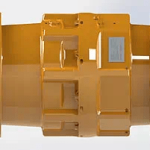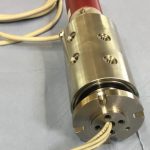Types of Extinguishers to Use on Electrical Fires
Electricity is the major cause of fire accidents in the UK, with over 20,000 incidents reported annually. Nine out of ten electric fires are caused by faulty electric appliances or bad electricity installation. Modern technology greatly contributes to the electrical fires since electronic appliances surround us. Besides, we ingrain them in our homes and offices because they make life easier. Who needs a gas stove when you can have your tea quickly by using an electric kettle?
In the UK, electronic appliances such as cookers, microwaves, portable home heaters and tumble dryers are commonly used. However, electrical appliances can blow up in case of a power surge and cause a fire. Faulty electrical outlets and appliances have electrical problems that can lead to fire accidents. It is good you be aware of what you use.
Electrical fire extinguishers
Electrical fires can cause detrimental damage if not put out on time. In 2020, there were over 46 deaths, 3000 injuries and a lot of property damage because of electricity. When it comes to fire safety in your home or workplace, it is necessary to have fire extinguishers in place. You can research more on the type you need for your premises that meets the fire safety regulations. They may come in handy if need be.
Choosing a fire extinguisher
Whether it is for your home or work place premises, it is important to keep a fire extinguisher. It is good to know the type of extinguisher you need for common household fires to avoid further damage in case of an incident.
There are different types of extinguishers that apply on different classes of fire. Class C extinguishers are suitable for electrical fire accidents. Many people use water to put out fire, which only escalates the situation. This is because water contains oxygen which supports combustion. Don’t be surprised if that fire takes long to go off.
However, there is no single fire extinguisher for all fire classes. Therefore, in the case of electrical fires, you either use dry-powder for less than 1000V appliances or carbon dioxide extinguishers.
Dry powder fire extinguisher
The colour label for this extinguisher is blue. If your premises use electrical equipment of below 1000V then you can use it if there is no absolute alternative. In the case of kitchen fires that involve cooking oil or residential fires then it is not the best option.
Due to its hazardous nature, they should be used on open space. The powder in the extinguisher can be inhaled and cause breathing problems. The powder separates the oxygen element which causes ignition by creating a coating over the appliance on fire. However, they do not totally cool the fire, thus it can re-ignite. It can be difficult to clean out the powder too after the fire is put out.
There is the standard dry powder that is commonly used and the specialist dry-powder that is for use on flammable metals only. If your workplace comprises of large scale chemical plants and use of electricity then perhaps you may need dry-powder extinguishers in place.
Carbon dioxide fire extinguishers
Carbon dioxide extinguishers are mainly used for electrical fires. Premises with many electrical equipment should have this type of extinguisher in place. The gas displaces oxygen, cuts off the air supply to put out the fire. Moreover, this type of extinguisher has a black label and they do not leave behind any residues. This type of extinguisher is safe for server room appliances and you sure to have your equipment in shape.
CO2 can also be used on flammable liquids like acetylene or petrol incidents. It easily smothers the fire making it a suitable extinguisher. In your premises have them installed near the fire exits or next to an uncertain fire risk source. Premises with electrical appliances such as offices, homes, kitchens or construction sites should have this extinguisher in case of an accident.
If you using a CO2 extinguisher, then avoid touching the horn as it can damage your skin by the frost CO2. It gets cold when in discharge.
How to use a fire extinguisher
It is ideal for the trained personnel to handle extinguishers. Nevertheless, if a fire accident occurs and there is no one trained to help out then anyone can come through. Most extinguishers are easy to use as they operate on the PASS technique. In that:
- Pull the pin and break the seal
- Aim the fire extinguisher to the fire base with the nozzle on direct angle
- Squeeze the handle to release an amount of the product
- Sweep the nozzle of the extinguisher across the fire base until it is off
Apply this method over and over until the fire is completely off. Although, you should be in safety gear to avoid any injury that might occur. It is important you know the different types of fires so that you can pick the right extinguisher and not worsen the situation.
Electrical safety
As part of electrical safety, have smoke alarms installed in your home or premises. Modern technology has alarms that can give signals at the slightest accident. Besides, residual current device installation can save your life in case of faulty incidents.
Misuse of electrical appliances is the number one lead cause of home fires. Electrical safety starts with using the right equipment for its purpose. Turn off appliances that are not in use and do periodic inspections on the home electrical installations.
Bottom line
Electrical fires are common and you should be careful when making purchase of electrical products. In case of a fire, call the fire and rescue team immediately. Stay safe.








Add Comment